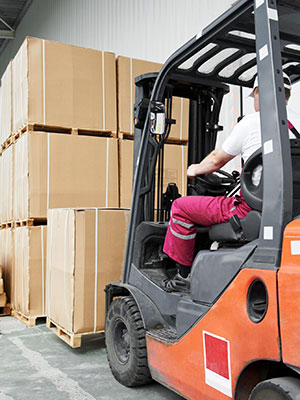
Prioritizing Warehouse Safety: OSHA Guidelines for Stable Stacking
The Occupational Safety and Health Administration (OSHA) emphasizes health and safety across all industries, particularly the warehouse industry, which involves significant risks.
OSHA Guidelines: Proper Storage and Stable Stacking
At the heart/core of OSHA’s mission lies a commitment to safeguarding workers. Warehouses pose hazardous risks; therefore, leadership must balance efficiency, productivity, and safety.
Within this context, stable stacking emerges as a cornerstone of warehouse risk management and warrants meticulous attention and compliance.
Stacking Enables Efficient Use of Space: Stacking Techniques
Efficient use of space is paramount in warehouse management, and stacking techniques are pivotal in achieving this goal.
Let's explore manual and forklift stacking methods, each offering distinct benefits and considerations in balancing efficiency and safety within warehouse operations.
Manual Stacking

Manual stacking involves the physical arrangement of goods by warehouse personnel without the use of machinery. Stack configurations can be adjusted according to warehouse inventory levels and spatial constraints.
While seemingly straightforward, this method requires meticulous attention to detail to ensure stability and security. To minimize the risk of instability and accidents, workers must receive specific training in stacking techniques.
Forklift Stacking

Conversely, forklift stacking involves lifting and positioning materials onto racks or shelves using specialized equipment, such as forklifts or reach trucks. This method is efficient and fast for stacking heavier or bulkier items that are difficult to handle manually. It requires skilled operators who are trained in safe forklift operation to prevent accidents and align stacks properly.
Employees Who Need to Understand Stable Stacking Techniques
Anyone who accesses stored products—or stores products—for any reason needs to know OSHA’s stable stacking guidelines. Here are some employees to keep in mind when providing information:
- Stock and Material Movers
- Forklift, Tow, Clamp, and Reach Operators
- Stock Pickers and Packagers
- Assemblers, Kitters, and Fabricators
- Inspectors and Testers
- Inventory Monitors and RF Scanners
- Sorters and Weighers
Why OSHA-Compliant Stable Stacking Is an Essential Safety Precaution
OSHA-compliant stable stacking isn't just about organizational convenience and efficiency; it's about ensuring the safety of warehouse personnel and preventing potential accidents.
Benefits of Stable Stacking Compliance
Compliance with stable stacking guidelines offers numerous benefits for warehouses.
- Fosters a safer work environment overall
- Enhances operational efficiency
- Ensures goods are stored securely and are safely and efficiently accessible
- Minimizes potential inventory, infrastructure, and other property damage
- Saves costs on repairs and replacements
- Aligns with regulatory requirements
- Cultivates a safety culture
- https://www.osha.gov
- https://www.allaboutlean.com/storage-strategies-stacking-options/
- https://www.osha.gov/laws-regs/regulations/standardnumber/1926/1926.250
Additional Resources
- https://www.liftone.net/blog/safe-storage-and-stacking-in-the-warehouse/
- https://www.vectorsolutions.com/resources/blogs/safe-stacking-guidelines-for-warehouses/
- https://www.linkedin.com/pulse/palletising-stacking-techniques-how-optimise-warehouse-ben-terry/
